CASTELLO VERRAZZANO
CASTELLO VERRAZZANO
Castello di Fonterutoli offers cosy accommodation as part of its historic wine estate which dates back hundreds of years starting from the 1400s. With grounds spanning nearly 1,600 acres (650 hectares) it is located near Castellina in Chianti in the heart of the Chianti Classico region.
Sixteen suites and rooms spread over five houses inside the ancient walls of Fonterutoli provide guests with an opportunity to savour the ageless charms of a Tuscan borgo. The hotel presents a truly traditional Tuscan feel and guests staying here in the heart of the estate will feel like they are living in a real Tuscan country village.
Each room has been restored to represent authentic Tuscan style by the family architect, Agnese Mazzei. All rooms boast their own unique personalities and you will find charming, comfortable bedrooms complete with en-suite bathrooms, beautiful views, and panoramic terraces with stunning countryside landscapes views to marvel at.
In the surrounding areas there are plenty of outdoor activities to try including hiking, biking and horseback riding which you hosts will happily help you to organise if needed.
Wine tours of the property’s spectacular winery, wine tastings as well as visits to nearby villages and towns, local farms, factories and artisan shops can be organised, plus if you want to learn the secrets of delicious Tuscan cooking you can even try cooking classes.
The hotel boasts its own gourmet restaurant, the Osteria di Fonterutoli, where guests can enjoy a traditional Tuscan dining experience. The menu changes every few weeks to reflect the seasonality of local produce to provide the freshest and most delicious ingredients to your plate.
There is a modern, intimate country-style indoor dining area as well as an outside terrace with views of olive groves, vineyards, and the rolling Tuscan countryside – the perfect accompaniment to a sumptuous dinner.
This hotel is perfect for wine lovers who want to immerse themselves in a true Tuscan lifestyle and be able to explore the wine scene at the same time.
The Chiantigiana is 74.9 km long and connects Florence to Siena. Part of the magic of a road trip in Chiantishire is testing out little roads on a whim and ending up in some unexpected place. You can’t really go wrong, there is always something beautiful to see and tasty to eat around the bend.
Food and wine lovers should include a stop in Panzano in Chianti. Back on the Chiantigiana, take a right turn onto Via della Conca d’Oro and drive up to other little medieval town. The Panzano castle is quite a sight to behold with its beautiful stone towers and loggia terrace. Sadly, the castle can’t be visited because it has been transformed into private residences.
The real treasure of Panzano is the Conca d’Oro, or the shell shaped valley that surrounds the town. Panzano is a great place to enjoy breathtaking views of the Tuscan landscape with its forest, olive groves and vineyards. Wine is at the center of the Vino al Vino festival held in mid September. It’s the perfect opportunity to sample the local Chianti wine production.
CASTELLINA
Castellina was a crucial Florentine military outpost in the war between Siena and Florence (1552-1559). The fact that Castellina is much closer to Siena, than it is to the region’s capital, gives an idea of the expansion of Florence at the time. If you want to immerse yourself in the medieval atmosphere, head to Via delle Volte. This arched stone passage follows the eastern outer city walls. You can peek out of the arrow slits and admire the panorama of the Chianti countryside. Via delle Volte is one of the few remainders of the fortified wall perimeter. Most of it was destroyed during various battles throughout history.
Castellina is also famous for a big Etruscan tomb called Montecalvario. The knoll hosts four burial chambers. The monument is open to the public and free of charge. In order to see in the dark press the light switch at the entrance. Beware, the light is on a timer and you could end up in the dark when you least expect it! The ground can also get quite muddy after heavy rains.
RADDA
From Castellina in Chianti, backtrack on the Chiantigiana until you get to the turnoff for the SR 429 (Strada Regionale 429). You will reach Radda in about 15 minutes. This charming town on a hill was founded by the Etruscans. It then served as the capital of the Lega del Chianti, a military alliance affiliated to Florence during the Florence-Siena wars. Once the conflict ended, the noble families and land owners of Radda focused their energies on the production of wine. Radda has been actively producing this beloved beverage for the last 5 centuries!
If you want to discover the Chianti countryside differently, come to Radda in March for the Chianti Ultra Race. Radda organises three races of different lengths (15k, 42k, 73k) on trails around the vineyards of the area.
GAIOLE
Continue on the SR 429. At the crossroads take a right turn onto SP 2 (Strada Provinciale 2 di Molilungo). The drive is only 15 minutes long. Gaiole in Chianti, helped by its strategic position near many important roads, was a bustling market town in the Renaissance. The town, just like Radda, was also part of the Lega del Chianti. Unlike most of the other towns in Chiantishire, Gaiole isn’t fortified. But don’t be disappointed, there are at least four incredible castles to visit nearby: castello di Lucignano, castello di Meleto, castello di Ama and castello di Brolio. This last one, owned by the Ricasoli family, has been destroyed and rebuilt so many times that is has become a compendium of different architectural styles. In 1835, the baron Bettino Ricasoli had his medieval castle transformed in the neo-gothic style very much in vogue in England at the time. The very same baron was instrumental in creating the recipe for the Chianti wine we enjoy today. The garden and a small museum are the only places that can be visited for the entrance fee of €5 and €8 respectively. Both include a wine tasting.
The Chiantigiana is the best way to enjoy the Chianti area at a slow pace and without the typical flocks of tourists. The charming little towns that dot the hilly landscape are perfect for short stops, a bite of delicious food and a glass of red.
.
.
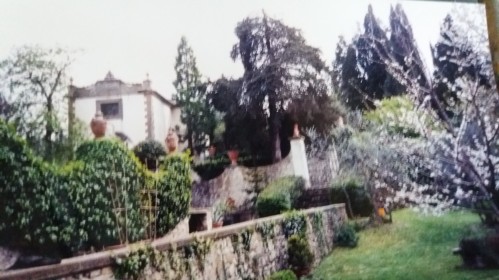
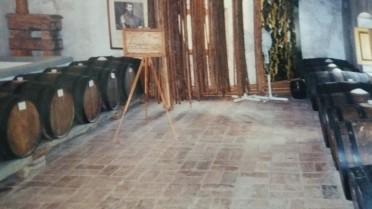
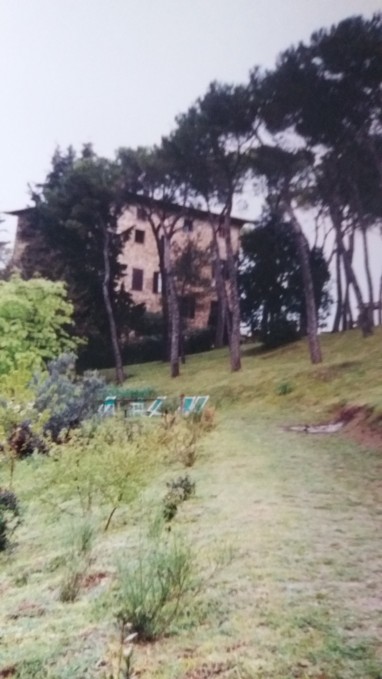

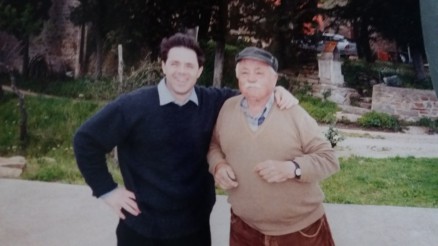
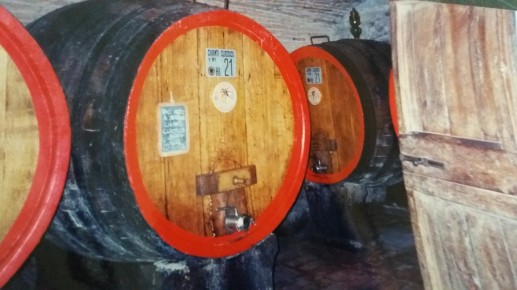
“LOOKING FORWARD to SEEING OLD FRIENDS”
PICTURES From PAST TRE BICCHIERI EVENTS
AMAZON.com
Italian Cookbook Author
Daniel Bellino Zwicke
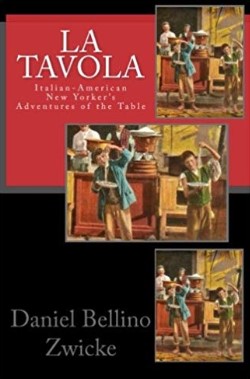
.
.
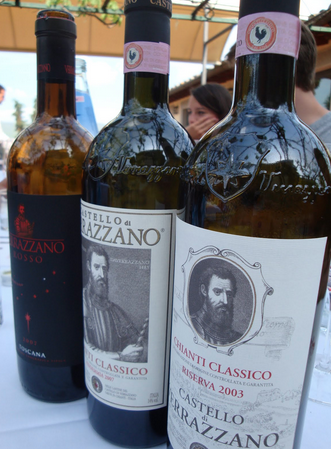
Chianti! Chianti is Sacred Nectar of the Gods. Being so, Chianti should thus be treated accordingly to its exalted status, being deserved of society’s highest accolades that is Chianti’s due. Since its creation by the Baron Ricasoli in the 1870’s, Chianti has been held in the highest esteem and prestige. In its existence it has had a bit of a bumpy road in terms of quality and prestige for a portion of its history. This bumpy road or shall we say low-point for Chianti took place around the early 1960’s and into the late 1970’s, a period of about twenty-years. The Chianti of Chianti Classico in these years was pretty much; thinned-out, characterless, commercial wine of quantity rather than quality. It was all about producing as much wine per acre, that was possible, with pretty much a disregard for quality, large quantities of insipid, weak nondescript wines instead of wines with proper concentration, substance, and character. At the time (1960-1981), this was pretty much the case for most wines of Italy, not just Tuscany and the region of Chianti Classico. This being said, there was always a small percentage of top quality producers that never strayed to the negative side. These producers (wine estates) always produced good top-level wine outside of the majority of those producing a inferior product (Chianti). It’s just that at the time, the majority of the Italian wine industry was going for the money. It was more profitable to produce higher quantities of inferior wine, than to produce smaller amounts of higher quality Chianti, and so this is the way thing went for some time. Most likely it was not just that those making Chianti in this low-period may have wanted to make better quality Chianti, but the market which included the United States as the primary customer, along with Italians in Italy didn’t expect it. Once some estates started turning out lower quality Chianti, there was a snowball affect and so it seems, most Americans buying Chianti in the 50s, 60, and 1970s just expected Chianti at a cheaper price, of acceptable quality, and in the ubiquitous straw-wrapped wine-flask that was Chianti at the time was famous for, cheap and in its expected Straw Bottle. This is what the larger Chianti buying public, and even if there was higher quality Chianti, and there was some, most consumers just wanted the cheap stuff.
One of the most influential figures in the history of Chianti is the Italian statesman, Bettino Ricasoli who created the Chianti recipe that would later be canonized in DOC regulations. The Ricasoli family traces their lineage in the Chianti region to Lombard barons who ruled during the 11th century. The family estate in Brolio is located in what is now known as the heart of the Chianti Classico region in the province of Siena. Orphaned at a young age, his family estate was crippled with debt and in disarray shortly after Ricasoli got married. Restoring the estate and its vineyard became his primary focus. Ricasoli traveled throughout France and Germany, studying the latest winemaking methods and brought back with him vine cuttings of new grape varieties. He began to experiment in his vineyard and cellar on which grapes produced the best wines at his estate. His work eventually settled on a blend of three Tuscan grapes-Sangiovese, Canaiolo and Malvasia.
I myself am on, and have been on a personal quest to have the laws governing how Chianti can be made. If I could make Chianti, what would I do? How would I make it? What style, thick and concentrated, thin and light, or somewhere in-between? Would I allow non-traditional secondary grapes of Cabernet Sauvignon or Merlot? “Certainly not! That would be most sacrilegious.” Number one, in molding what many consider to be a real and true classic Chianti, “you never ever allow, Merlot, Cabernet, Syrah or any grapes that are not native or traditional to the Chianti Classico zone into the mix (the blend of Chianti). As anyone who know a little about Chianti, they know that the primary grape of this storied wine is Sangiovese and from the beginning Chianti has always been a wine made with a blend of 3 or 4 native grape varietals with the primary grape being Sangiovese with small amounts of native grapes making up the remainder of an estates Chianti Classico. The secondary grapes to the primary grape of Sangiovese (75-100%) should only be either; Canaiolo, Colorino, Ciliegiolo, Trebbiano, or Malvasia Bianco, or Malvasi Nero, with any of these grapes being added singularly or in any combination the vintner chooses. The percentage of white grapes allowed since 1984 is a maximum of 6% as opposed to the once ridiculous about of 30% in the sixties and seventies. The allowance of up to 30% white grapes was the major factor in bringing about the bad reputation that Chianti garnered during those dismal years when the quantity of wine made (bulk) was favored over quality in smaller numbers of production in much of Italy. Luckily there were producers like the Antinori family who started making great wines in the Chianti Classico zone which could not be labeled under the Chianti D.O.C. but as Vin di Tavola (the lowest designation, though these wines were of Superior quality), in the wines; “Solaia” which was made primarily of Cabernet Sauvignon with about 20% Sangiovese and “Tignanello” which was made of 100% Sangiovese in its first vintage in 1971. After the first vintage of Tignanello a percentage of Cabernet Sauvignon (15-20%) was added a couple years later and Tignanello became and was designated a Vino di Tavola which most people know as Super Tuscan. So that very first vintage of the now famous Super Tuscan wine called Tignanello, was originally classified as a Chianti Classico. The Marchese Piero Antinori began making Tignanello in the Chianti Classico region along with “Sassicia” from his vineyard on the Tuscan coast of Bolgerhi. These wines were instrumental in elevating the wines of Tuscany, in that by making these high quality wines and inspiring other producers to do the same. So, the act of making exceptional quality wines in and around the Chianti region, which were not Chianti’s but Super Tuscans, was the factor that sparked the beginning of better and better Chianti’s over time.
The last two dates of 1984 and 1996 in which we see the governing bodies changing the laws governing the production of Chianti. These laws forced producers to make better Chianti. These laws which allowed producers to completely eliminate white varietals from Chianti and not allowing more than 6% white grapes was the main factor to improving quality in the wine, while at the same time allowing up to 15% of other varieties such as Merlot or Cabernet and the allowance of making a Chianti from 100% Sangiovese, thus allowing a Chianti that is not a blended wine, if a producer so chose to make Chianti in this fashion. These two new amendments gave way to radically changing what a Chianti was, now, what many believe to be more of a Super Tuscan than a true Chianti. Chianti’s made of solely 100% Sangiovese or those made with 10 to 15 percent Merlot or Cabernet Sauvignon would lose much of the general character that a “True Chianti” should have in order for it to really be Chianti and not just to say it is Chianti when it really is not. It’s really a Super Tuscan, which is fine, just to label it, or say that it is Chianti, when it really is not. I must admit that at the time the laws first allowed the addition of these International varieties, I was quite excited and thought that this was a great thing for Chianti. It wasn’t. I was wrong. I quickly changed my mind about what true Chianti really is, and not a wine that has substantial parts Merlot or Cabernet Sauvignon instead of what they should have, which are the tradition Chianti sub-varietals of Canniolo, Colorino, Malvasia, or Trebbiano. As I tasted these new wines and at the same time started learning a great deal more about Italian wine, I soon discovered that the Chianti’s that had either Merlot or Cabernet tasted completely different. “They didn’t taste like Chianti!” They didn’t have the wonderful rustic characters of true Chianti. They taste more like wines from California, instead of having the characteristics from the “Terroir” of where they came from;
“Chianti Classico”, “Chianti Rufina”, “Colli Sienesi”, or “Colli Fiorentina”. Fortunately most producers making Chianti do not put Merlot or Cabernet in the bottles they label Chianti, most use Canaiolo or Colorino as the secondary grape. Wine estates that grow Merlot, Cabernet, or Syrah, generally use these varieties to make “Super Tuscan” wines which are much more profitable as they can get much higher prices on the wholesale and retail markets for these wines. To myself and other Italian Wine Geeks, if wine has Merlot or Cabernet in it, it’s a “Super Tuscan” not a Chianti and should be labeled as such as these grape varietals used, even in smaller percentages of only 5 to 10 percent are still powerful enough as to substantially change the character of what is supposed to be “Chianti”. These wines become something else, they become “Super Tuscans” and should be labeled as such (as far as I’m concerned)and not as Chianti which as the laws stand now they can be called Chianti. I am on a personal crusade to have the laws changed once again, which would eliminate non-native varietals from the Chianti blend.
One of the new parameters of making Chianti is that it can be made solely of 100% Sangiovese. This is the other part of laws governing Chianti which should be changed. As in its long tradition, Chianti was always a blend of grapes with Sangiovese making up the greatest part of the mix. Chianti was and always should be a blended wine, it should not be allowed to be made solely of Sangiovese, then again it’s a Super Tuscan not Chianti if you have a truly traditionalist mind towards Chianti. Chianti, when it was originated in the 1870’s by the Baron Bettino Ricasoli was a wine made of a blend of native grapes of the region of Chianti. The original Chianti made by Ricasoli was a blended wine made mostly of Sangiovese as the primary grape with small portions of Trebbiano and Cannaiolo. Until the lastest laws of 1996 which laid down the parameters of how Chianti could be made as a blend and it can also be made of purely 100% Sangiovese. Chianti made of just 100% Sangiovese is not quite true Chianti as well. I love Sangiovese. It is my favorite grape varietal in the World, but as well, Chianti was always a blended wine with Sangiovese as the primary grape varietal. Chianti was a blended wine for well over 100 years. With the latest laws, Chianti can be a made purely of Sangiovese. Some wines that are made of 100% Sangiovese and are known as Super Tuscans are; “Prunaio”, “I Sodi San Niccolo”, “Cipresso”, Le Pergole Torta among many others. They are wonderful wines that fall into the Super-T category as any wine made in the Chiati Classico Zone should be. Chianti should always be a blend, even if it is only 1% or 2% of another native grape, which should be Canaiolo, Colorino, Ciliegiolo, Trebbianno, or Malvasia Bianco, or Malvasia Nero. The white varietals should not exceed more than 2% of the blend. This is how the new laws governing the production of Chianti would be laid down if it was up to me and others who are traditionalist and want Chianti to always adhere to its original form. “Real Chianti!” The wines should have fairly low yields of grapes harvested, but not so low as to produce super-concentrated rich wines that are more like blockbuster California Cabs or Super Tuscan powerhouses. This is not what Chianti is about. Chianti should be a have a certain amount of concentration and at the same time maintain its wonderful rustic character with Cherry and Sour Cherry flavors dominating with a touch of spice and earthiness. Chianti should be an easy drinking medium to lower-scale-full-bodied wine. Chianti should always maintain the tradition of being a blended wine with Sangiovese making up the great the majority of its physical make-up. It should never be solely made from 100% Sangiovese but contain at least 2% of one, two, or three of the traditional native sub-varietal grapes of Chianti Classico and never Merlot, Cabernet, Syhrah or other International variety.
If I could set these laws as the new DOCG laws of Chianti Classico the laws would never have to be changed again. The laws, the way they are set today are a little too broad. One thing that is good in the way the laws stand now is that they do allow for a proper Chianti to be made, and most Chianti’s are made in this manner, but at the same time they allow for non-native varieties and the allowance of 100% Sangiovese. These last two regulations must be changed for all Chianti’s to be “True Chianti”. It is as simple as that! So, let us hope that one day in the near future, these laws will be laid down and every single bottle labeled Chianti is actually real, true Chianti that lives up to this great wines history and origins.
Chianti Classico. What is it? First off, the area came first, the wine Chianti Classico is name after the area it comes from, which is Chianti. The Chianti Classico is the most famous. It stretches from just a few miles south of Florence at its most northern tip and runs down almost 30 miles to Castelnuovo Beradenga at its most southern point. As Chianti grew in popularity and fame, a number of other regions where Chianti can be made developed. Some of these areas are Cooli Fiorentini, Colli Senesi, Colli Arentini, and Rufina. None of these sub areas have ever gained anywhere near the fame as thee original Chianti Classico Zone. The Chianti Zone of Rufina, just outside Florence is the most prestigious zone apart from Chianti. These Chianti’s are of the highest quality. Three very well know producers in this area are Frescobaldi, Selvapiana, and Rufino and although the zone of Rufina is not as well known as the Chianti Classico zone, the zone of Rufina does have thee most famous Chianti of all, Rufino’s Chianti Classico Riserva Ducale (Gold Label).
So in closing, let us say that we hope the laws that govern the making of Chianti Classico will be changed some day. I think it is sure to happen. It would be best if it happens sooner than later, that in the making of Chianti, there shall be no Merlot, Cabernet Sauvignon, Syhrah or any other non-native or non-traditional grape varieties of Chianti Classico. Also the laws should be changed to eliminate 100% Sangiovese Chianti’s, Chianti should always be a blend.
The region of Chianti Classico is one of the World’s most beautiful wine regions, if not the most beautiful. It is enchanting, filled with castles, all forms of wine estates from small and simply to big and majestic. The beautiful rolling hills of Chianti are filled with Cypress trees that dot the crest of many a hill, along with rugged stone farm houses and the wondrous rows
Sangiovese vines lining the gently sloping hills.
Chianti is relatively untouched or spoiled by any type of ugly modern structures. The Chiantigiana road is still the ancient one built by the Romans and its pavement blends in perfectly with its untouched surroundings. Chianti is filled with lovely little towns like Castellina, Gaile, Greve, and Radda where you will find the famous Dante quoting butcher Dario Cechini. You can visit and stay in beautiful wine estates like Fattoria Valle, Castello Verazzano in Greve where the explorer Giovani Verazzano is from. You can stay at the beautiful estate of Vignamaggio where Gioconda lived and was painted my Michael Angelo. She is “Mona Lisa.”
Chianti, it’s not just a wine. “It’s a Place, a very beautiful place!”
.
A LIST of TRUE CHIANTI’S made primarily with Sangiovese with small amounts of native sub-varities such as Canaiolo, Malvasia Nero, Colorino, and Ciliegiolo and not containing any Cabernet Sauvignon, Merlot, Syhrah, or any Intl. Varieties.
Monsanto “Il Poggio” Chianti Classico Riserva
Castello Verazzano Chianti Classico
Castello Brolio Chainti Classico Reserva
Vignamaggio Chinati Classico Riserva “Mona Lisa”
Rufino Chianti Classico Riserva “Ducale” (Gold Label)
Selvapiana Chianti Rufina
.
.